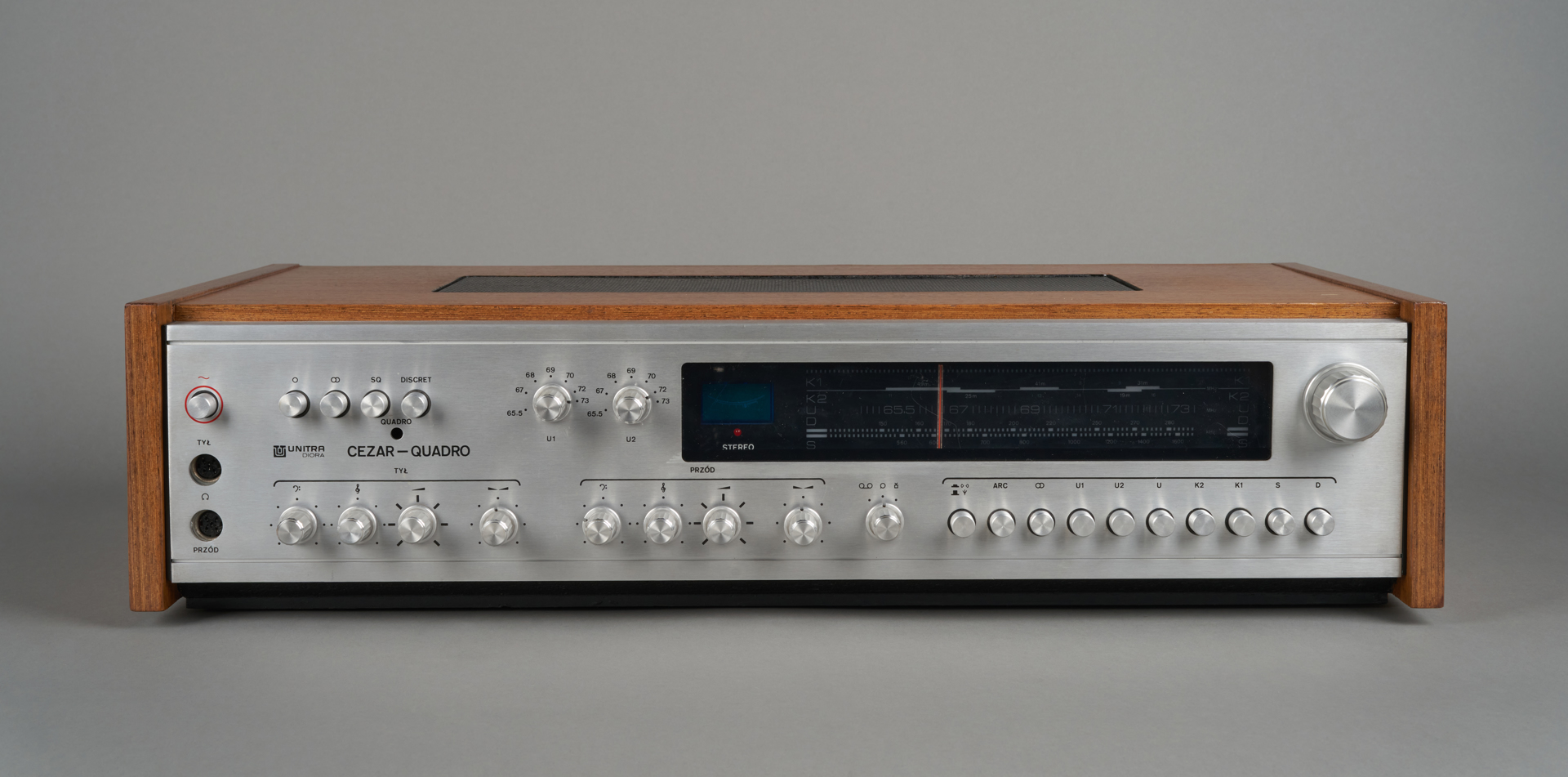
Cezar Quadro radio receiver DKS-201
Zakłady Radiowe Diora, Unitra, Herc, Stefan, / 1976 - 1977Creator
Zakłady Radiowe Diora, Unitra, Herc, Stefan
Time and place of creation
Time:
1976 - 1977
Place:
Poland
The Cezar Quadro DKS-201 16001 is the first and only Polish quadrophonic transistor radio receiver. It was manufactured in 1976 (the year it was also presented at the Poznań International Fair) and marketed during the following year by Zakłady Radiowe Diora in Dzierżoniów. It was designed by engineer Stefan Herc – a promoter of the quadrophony format in recording, broadcasting, and sound reproduction techniques. The design was based on solutions adopted in the DSH-101 and DSH-102 Elizabeth Hi-Fi receivers. According to the manufacturer, “the four amplifier channels and the quadraphonic SQ decoder allow playback of radio broadcasts and records in the SQ system, as well as tape recordings in the discrete system. The receiver can also be used to play back pseudo-quadraphonic, stereo or mono sound”. The Cezar Quadro has five reception bands (UHF, two short wave ranges, and one range each for the medium and long wave bands) and automatic frequency control, which stabilises its operation. The device can be controlled using the rotary and button switches, as well as VU meters and station indicators on the metallic front wall (different from the veneer housing). The receiver combines the function of an electroacoustic amplifier and a radio tuner, which operates using the power supply unit, audio decoders and input/output sockets. It is the core component of musical combos. The Cezar Quadro was sold with a set of four, two-way, closed cabinet (“compact” type) Tonsil Zg-25C speakers.
The quadraphonic system is the first ever commercial multi-channel sound system, and was developed in the 1970s. According to the assumptions of its designers, for sound transmission it uses “four acoustic paths terminated for playback with four speakers, two of them placed in front of the listener, and two behind. Such a placement of speakers allows echo effects to be reproduced. Two-channel stereophony does not afford such possibility”. In this way, quadraphony – or four channel stereophony – allows reproduction of sounds in a three-dimensional space, i.e., in a full, undistorted way”. Even though the system enabled the creation of an impression of spatiality and depth of sound, it didn’t prove to be successful due to its high production cost, as well as the lack of compatibility between the signal format and the receivers possessed by most listeners, which is why it was abandoned near the end of the 1970s. Multichannel sound playback wasn’t attempted again before the 1990s, when the Dolby Surround standard became popular.
Author: Filip Wróblewski
Cezar Quadro radio receiver DKS-201
Zakłady Radiowe Diora, Unitra, Herc, Stefan, / 1976 - 1977Creator
Zakłady Radiowe Diora, Unitra, Herc, Stefan
Time and place of creation
Time:
1976 - 1977
Place:
Poland











